#landrace
Explore tagged Tumblr posts
Text
So a lot of new shit dropped in the latest Minecraft update but obviously I only care about the pigs. Let's discuss breeds!
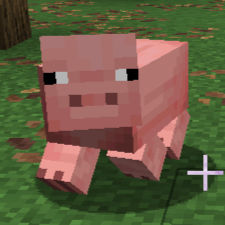
Starting off with the original pig just because— this little guy's probably a Landrace pig!

They're some of the most standard domestic pigs out there along with Yorkshires, but Yorkshires have perkier ears. Landrace pig ears lay flat much more similarly to our Minecraft pigs!
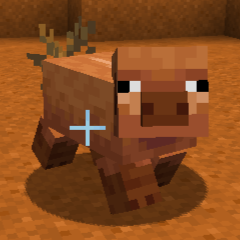
Next we have the warm pigs. These babies are probably Durocs!

Look how red and beautiful they are! There aren't many common red pigs, so it was really between these guys and Tamworths. Tamworths are an Irish breed, so they don't come from a particularly hot climate. Durocs however originated from Africa from what I researched!
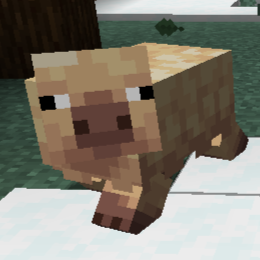
And finally we have the cold pigs. These guys are most definitely Mangalicas!
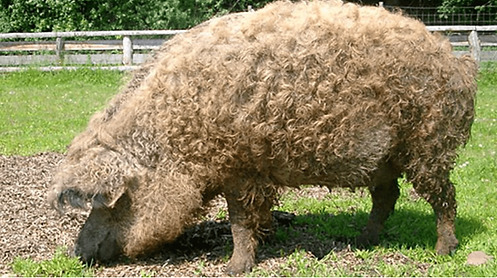
These guys are like. One of the most prominent breeds with thick creamy hair to keep them warm. They're also Hungarian! They're also my favorite pig breed!!!!!
Hope you learned something new about pigs ^ - ^
#i love pigs so much. unzips my hoodie to reveal a T-shirt that reads “ask me about my pig fun facts”#Minecraft#Minecraft pigs#Minecraft update#minecraft snapshot#Minecraft snapshot 25w05a#pigs#pig breeds#mangalica#duroc#landrace#words
6K notes
·
View notes
Text

Pumpkin seed drying season is in effect!
3 notes
·
View notes
Text
#to buy#going at the TOP of my xmas wishlist#if i dont get it for that or my bday imma buy it myself lol#price tag big but also i spend $0-5 on most books so an outlier here and there is fine to me lol#also this is like. a mf textbook. sO yeah its gonna cost money lol#anyways#tags#uhhh#book#dog book#dog breeds#primitive dog#sighthound#spitz#landrace#livestock guardian dog#indigenous dog#sled dog#hunting dog#idfk
6 notes
·
View notes
Photo

Bath, United Kingdom, April 2023 Cinestill 400D
#bath#uk#united kingdom#bath spa#upstairs at landrace#landrace#35mm#minolta x300#cinestill 400d#film#filmisnotdead#filmography
2 notes
·
View notes
Photo

(via Skip the Cooking: Top Local Restaurants to Celebrate Thanksgiving in Style)
1 note
·
View note
Text
op's ginger cat was missing and she asked for help from the dragon-li in the neighborhood and dragon-li has successfully kicked ginger's ass back home (cr: 如欣如愿)




#china#douyin#video#cats#fun#funny#cnetizens have many smart and useful methods to find their missing cats and this is the most popular one#a dragon-li is like the king in the cat neighborhood#dragon-li is not tabby there are differences#it's like a chinese landrace
1K notes
·
View notes
Text
THE HIGHLAND KHAIT: AN OVERVIEW
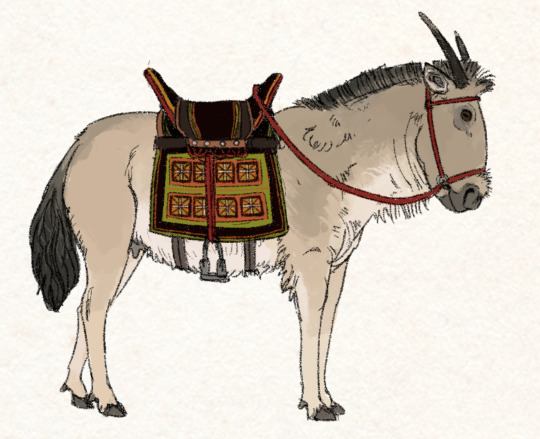
The Highland khait, known internally as the feydhi, is a landrace breed of the Highlands of contemporary Imperial Wardin, and highly distinctive from all other native khait in the region. Their horns are notably unusual, being curved and pointed and frequently asymmetrical, which is often cited as a result of their folkloric origins as hybrids of khait and the (asymmetrically one-antlered) scimitar deer. They are very stocky and small for a riding breed, typically standing no more (and usually less) than 55 inches at the shoulder. Their coats come in a wide variety of colors and patterning, though a majority of individuals are dun or gray. Their manes are notably short and stiff, and they lack the beards common in many other khait breeds.
While notably slower than other khait, feydhi are very surefooted and have notably smooth gaits, able to move at a steady trot over difficult terrain with minimal bouncing for the rider. They are extremely strong for their size, and fully capable of carrying most adult riders and heavy packs, and pulling plows.
Their hair is longer than average but provides little insulation and they do not grow winter coats, and instead rely predominantly on fat stores to cope with winter conditions. They are easy keepers that can gain and maintain mass with very poor grazing, though most require supplements of grain to their diets to gain sufficient fat stores to survive winters in the highest settled altitudes.
Feydhi can adapt well to the hotter lowlands conditions than other Highlands livestock largely due to this lack of thick hair. Because they require no supplement to their diet to maintain condition, they are very affordable khait and an asset (along with a few other specialized lowlands breeds) during dry seasons, and see wide use throughout Imperial Wardin (particularly as pack animals along trade routes). They often survive a little too well in the lowlands, being adapted to sparse mountain pastures rather than seasonally abundant grasslands, and can be prone to obesity when allowed to graze freely.
They show a small degree of selection for milk production due to the import of dairy to the regional diet of the Highlands. Their milk has the highest fat content of the native livestock, but a notably gamey taste that is generally disfavored. It's used primarily as-is for basic sustenance and medicinal purposes- growing children and pregnant women are encouraged to drink feydhi milk to build fat stores, and mounted herders will often ride lactating mares in the winter and subsist largely upon their milk. Their meat is also the fattiest of any of the regional livestock and (unlike their milk) generally regarded as the best in taste, though their value as riding animals and more expensive upkeep prevents their consumption on any regular basis.
Rendered, chilled feydhi fat mashed with berries and eaten on bread is a seasonal delicacy eaten at midwinter feasts. It is considered an obligation of a wealthy ruling clan to slaughter some of their khait and provide the fat for this meal to their dependents, and an indication of failing wealth and authority if they cannot. A phrase translating as 'rich in cattle, poor in fat' invokes the notion of having a clan having superficial wealth (in cattle, which can largely sustain themselves on poor grazing and thus can hide a loss of material power for a period) but a heavily insecure position (unable to actually afford to lose their more high maintenance assets), and is used colloquially to describe a person or people giving hollow performances to mask lacking or lost substance.
They have some unique behavioral quirks among khait, such as a propensity to use their lower teeth in allogrooming to rake and scratch each other. This favoring of their teeth also lends more aggressive animals to biting (in addition to the far more khait-typical headbutting and kicking), a behavior that seems reserved exclusively for humans and is rarely used in intraspecies conflict. As with all bovidae, they no upper incisors and their bite can only do so much harm in most circumstances, but they can cause significant damage to the fingers of the unwary. They are also known for their tendency to consume bite-sized animals such as small birds when given the opportunity- this is not atypical of khait (or many grazing herbivores at large), but is emphasized in combination with their tendency to bite to cast them as uniquely carnivorous.
Their temperaments are regarded as notably stubborn and somewhat testy, but this is made up for with their intelligence and generally calm demeanor. Feydhi are most prized for their bravery- they do not spook easily against wild predators and can perform some functions as livestock guardians, readily chasing off small threats and known to stand their ground against even large predators, particularly hyena (the most populous and routinely threatening predator in the region).
This trait is commonly noted in folktales- one western mountain pass is said to be haunted by the ghost of an old gray mare who stood guard over her master (a noted drunk, who had fallen off her back and passed out) against a pack of hyenas for an entire night. When her rider awoke the next day, he found her dead and bloodied with her horns stuck into a hyena's side, having killed the predators but succumbed to her own wounds. He was so sorrowful that he resolved to never drink again (outside of holidays, and perhaps weddings) and buried her under stone. Travelers through this pass customarily pour out liquor and leave little offerings of grain for the animal's spirit, which is said to be seen at night from a distance, standing vigilant atop its cairn, but vanishes when approached.
The settlement cycle stories of the Hill Tribes go into extensive detail about the cattle and horses brought overseas with the migrants, but elaborate little on their khait and imply that a riding culture did not exist during the settlement period. The stories tend to describe people as walking on foot or riding their cattle, and khait riding is only mentioned in descriptions of proto-Wardi mounted nomads in the lowlands. It is likely that khait riding (rather than sole use as pack animals) was an adopted practice post-settlement, and possible that khait were not brought along with the migrants to begin with.
The actual origins of the feydhi breed are ambiguous as such. Old Ephenni folklore mentions tiny 'fairy' khait living in the Highlands that predated the arrival of the Hill Tribes, suggesting that these animals were already established as feral herds. It's highly possible that these herds were are a relic of the cairn-building civilization that existed in the Highlands prior to recorded history and had already long vanished (likely in a combination of plague and dispersal) prior to the settlement. The stories of feydhi being hybrids between foreign khait and native deer is also suggestive of such an origin, with wild deer as ancestors being a mythologized twist on feral khait.
Feydhi do not have the same status of cattle or horses as fundamental to subsistence, with much of their use being in utility as pack animals and transport over difficult terrain. However, they play very significant roles in the livestock raiding aspects of warrior culture, where they are used for quick exits and to help drive cattle and horses. Their roles in other aspects of warrior culture are more varied between tribes- some use them near-exclusively for raids, while others rely on them for open combat. Khait warrior culture is most central in the western Urbinnas tribes, who each consider themselves to be the most skilled riders and uniquely specialize towards mounted archery. The Urbinnas tribes have a long history of interaction with the lowlands Ephenni Wardi (alternating cycles of conflict and trade, and a half century of allyship against Imperial Burri occupiers). Both groups have a strong history of mounted warrior culture, and each claims to have introduced mounted archery to the other.
Khait also play roles in regional combat sports, which include mock battles and raids, races, archery, and most famously khait wrestling. The latter involves two mounted riders attempting to wrestle one another off their khait, gain control of their opponent's mount, and then successfully lead both animals out of the ring without their opponent re-mounting. This sport requires very calm, collected animals that will not panic while being fought over, and the measured temperament of the feydhi is well suited.
#The Wardi Highlands are not analogous to Iceland At All but having just spent a week surrounded by an awesome small cold#adapted horse landrace breed it was time to like actually flesh these guys out#creatures#hill tribes
148 notes
·
View notes
Text

Fourth generation old English radishes grown from seeds saved from Joey's senior year horticulture project. I'm letting 4 other plants go to seed to continue the landrace.
3 notes
·
View notes
Note
Kim the Dutch landrace goat. (I had to memorize that.) IS THERE ANY CONTENT SURROUNDING HIM PLEWEASEE HE SEEMS INTERESTING HE PEEKS MY INTEREST I THINK HE'S A LITTLE HOT HE HAS POTETNAIL (I think.) PLEASE
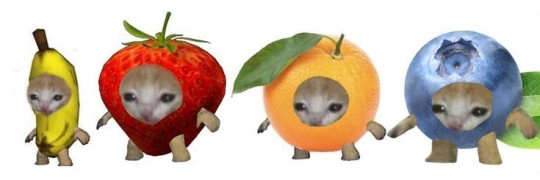
🐐Kim was a pretty chill guy. Well, when he wants to be. You've had to grab and yank him off people more times than you could count just because he got jealous of them looking at you for too long. Some ending up with a scratch or two, or a really bad headache from where he headbutted them
🐐if you give him the chance, he'll follow you around. Hiding behind cars, structures, other hybrids, and just breathing really heavily as he stares from afar. He has a lot of body hair. It's a pain having to shave him.
🐐he makes sexist jokes sometimes. But just give him a good thwack on the head and he'll shut up. He's a fatass hoe and he'll eat all your food. He's beefing with polka
You only get three headcanons. Why? I don't know, don't ask why
#queenie ocs#yandere x darling#yandere x reader#ocs#queenie writes#yandere male#yandere#yandere male x reader#male yandere#Yuii the cotton simp#Yandere hybrid x reader#Kim the dutch landrace goat#Yandere oc x reader#Yandere oc#yandere oc x you#yandere oc x y/n#yandere x you#yandere headcanons#Yandere boyfriend
137 notes
·
View notes
Note
Asdfjk for some reason I hadn't realized your characters were dogs, I had just mentally accepted them as fantasy beasts. Is this to say contemporary breeds like the pekingese also exist in your world? O8
Pekingese is one of the oldest dog breeds so yes, they definitely exist. I think the range of breeds and types you'd come across at any given situation is determined by how likely those breeds would've been present at that place at that era. I wouldn't put dobermans in medieval times because the breed didn't exist before around 1890, or terriers in Edo era Japan. Idk, it's not that serious but I like to think it adds a layer of believability? It's sorta fun at least.
I should add that even when I assign specific breeds to my characters, in reality the overwhelming majority of them are mixed to some degree. Being truly and strictly purebred gets you into Habsburg situations.
#answered#anonymous#btw I don't care about breed standards or when they were officially recognized what matters is whether the dog type/landrace was present#I'm hoping this makes sense I can feel my english failing me I shouldn't be trying to explain how any of this works at 3 am
173 notes
·
View notes
Text
Miss Piggy

9 notes
·
View notes
Link
#thompsonsanantonioriverwalk#landrace#winespectator#winespectatorrestaurantaward#restaurantawards#sanantonio#celebratorydinner#businessnews
0 notes
Text
Golden Tiger by Moment's Peace
It’s another rainy week here in Maine, so break out the sploofs and smoke some Golden Tiger inside and away from all that weather. This is another strain I’ve been looking forward to writing up since I first tried it maybe a year ago.
Sativa
Low THC (10% – 14%)
Flower I don’t really have a story to tell about Golden Tiger, at least not as I begin writing this review. My regular readers may already be wondering something along the lines of “Then why review Golden Tiger?” or “I wonder if after rambling for a few hundred words, will you realize you’re telling a story anyway?” I can answer the first of those hypothetical questions,…

View On WordPress
#Anxiety Reduction#Appetite Suppression#Balanced#Bitter#Bring it on#Bubbler#Calm Body#Citrus#Clean#Creative#Dry Mouth#Earth#Easy Hit#Euphoric#Evening#Floral#Flower#Fluffy#Golden Tiger#Landrace#Low THC#Medium Body#Medium Green#Microns#MOFGA#MOFGA C3#Moment&039;s Peace#Orange Hairs#Pain Relief#Pepper
0 notes
